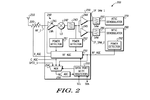Mnt
Member level 5
Measuring signal strength with a TV tuner ?
Hi,
Im starting to study RF with FM transmitters and I want to build a "tuned" field strength meter to test different antennas and transmitters.
I have two TV tuners: 1 analog and 1 digital (philips uv1316) which works with i2c.
I found how to use the digital one with Arduino: https://qlfecv.wordpress.com/2012/11/14/receptor-45-850-mhz-con-sintonizador-tv-analogica-y-arduino/
but I dont know how to measure the signal level.
Does larger signal means larger IF out or the IF have same amplitude for different signal levels ?
If its the 1st, I can measure it with 1 diode ( 1n4148 ? ) to make it DC and a capacitor ( what value? ).
Then I can read this with ADC and visualise it on a display.
- - - Updated - - -
Would a circuit like this work and why it doesn't have a voltage gain ?
Is 100p for C2 good ?


Hi,
Im starting to study RF with FM transmitters and I want to build a "tuned" field strength meter to test different antennas and transmitters.
I have two TV tuners: 1 analog and 1 digital (philips uv1316) which works with i2c.
I found how to use the digital one with Arduino: https://qlfecv.wordpress.com/2012/11/14/receptor-45-850-mhz-con-sintonizador-tv-analogica-y-arduino/
but I dont know how to measure the signal level.
Does larger signal means larger IF out or the IF have same amplitude for different signal levels ?
If its the 1st, I can measure it with 1 diode ( 1n4148 ? ) to make it DC and a capacitor ( what value? ).
Then I can read this with ADC and visualise it on a display.
- - - Updated - - -
Would a circuit like this work and why it doesn't have a voltage gain ?
Is 100p for C2 good ?



![IMG_20170612_164128[1].jpg IMG_20170612_164128[1].jpg](https://www.edaboard.com/data/attachments/71/71473-04df330a579a5e16b56f5c395b54108e.jpg)











